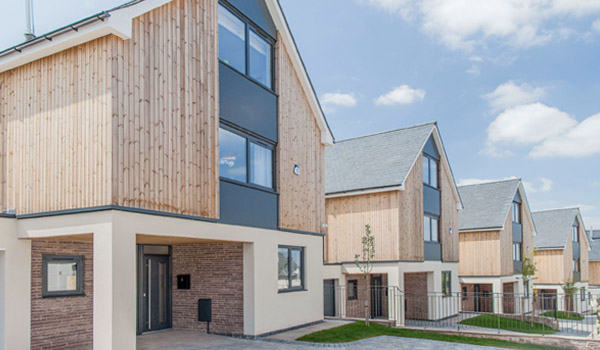November 27, 2018 / By admin
“Ten Characteristics of Places where People want to Live” – What People Want
The RIBA have recently published a paper detailing the top ten characteristics people desire when choosing their home. Using ten case studies, all based in the England, the research analysed the specific successful elements of these with a view to making recommendations for design, building methods and planning when developing future housing to improve the community housing effect. This study will help us and other alike see what people want when choosing there home.
01 The right place for the right housing
Unsurprisingly the location tops the list of what people consider. Naturally this is affected by many personal factors such as proximity to jobs or family or simple preference. However, the research found the general trend follows the established ‘popular areas’ which usually have an established infrastructure. As well as access to convenient services, such as, good local schools, green spaces and employment opportunities.
02 A place to start and a place to stay
Neighbourhood with a variety of housing suitable for single people, young couples and families right through to retirement apartments reach a broader spectrum of people and enable extended families to stay within the local area. According to the RIBA study this “fostering the community” approach leads to higher desirability of an area.
03 A place which fosters a sense of belonging
A neighbourhood which has a “distinctive identity” is seen as evoking a greater feeling of belonging than one with houses which are commonplace. This added attention to detail in the design of the housing and the neighbourhood layout can include promoting the local history and creating a neighbourhood which will “mature and improve over time.”
04 A place to live in nature
Another unsurprising characteristic is that people want access to green spaces, whether gardens or parks, or even just additional planting throughout the design. With the physical and mental well-being benefits of green areas being well documented this must be considered an essential part of all new developments.
05 A place to enjoy and be proud of
The study states, the townscape which exudes a sense of hierarchy helps to promote “uplifting day-to-day experiences”. The use of civic spaces as “outdoor rooms” to encourage people meeting such as parks or town squares helps promote the community spirit and pride in the neighbourhood.
06 A place with a choice of homes
Similar to point 2, this focuses on people wanting a mixture of properties available within one neighbourhood. However, the research throws up an interesting idea of multi-generational sharing in larger, more adaptable properties. Rather than smaller individual homes designed for a single person or a couple. This could help society adapt to the fact of people living longer and the increase in the number of people over 60.
Additionally, a new concept encourages multi-occupation of a building by offering purchasers the chance to purchase an amount of floor area in a building with the scope to arrange it and fit-out as they wish. This in not common place, but is happening already in the UK.
07 A place with unique and lasting appeal
Relying heavily on the quality of design, people desire homes which will stand the test of time, functionally & aesthetically. Naturally ‘kerb appeal’ is still a huge factor in people choosing their home. The current trend of traditional material palettes with modern crisp detailing shows no sign of abating and this style allows for many sympathetic adaptions of design to suit different contexts whilst also encompassing many environmentally friendly features.
08 A place where people feel at home
Continuing the theme from point seven, the research identified that along with the visual element of ‘kerb appeal’ is a need for the person to ‘feel at home.’ Whilst this is a personal perception of an intangible element, architecture can help to create the desirable ‘feel’ by designing with good proportions, using warm materials and designing to create “a sense of enclosure, seclusion and space.”
09 A sustainable place for future generations
Future proofing the homes for a low-carbon footprint and encompassing the ideals of sustainability is important to many home buyers. The study found that many of the best received schemes have been designed to go well beyond the current regulations. Many aim for very high environmental standards with certification, such as Passive House or the Code for Sustainable Homes.
The trend for home owners to move towards sustainability is more than just the house build and eco-friendly construction features. The desire includes practical living elements, such as, looking for good bus links or cycle paths to avoid unnecessary car journeys, the houses and local schools being located away from the roads to avoid the pollution and local amenities within walking distance.
10 A place where people thrive
Ultimately the desire of the home-owner is for their habitat to be a place where they, their families and future generations can, not just love, but really thrive. With “inherently energy efficient” homes designed to promote “health and wellbeing” the inhabitants quality of life, and those of the neighbouring community, can all improve.
To download the full RIBA report click here.
